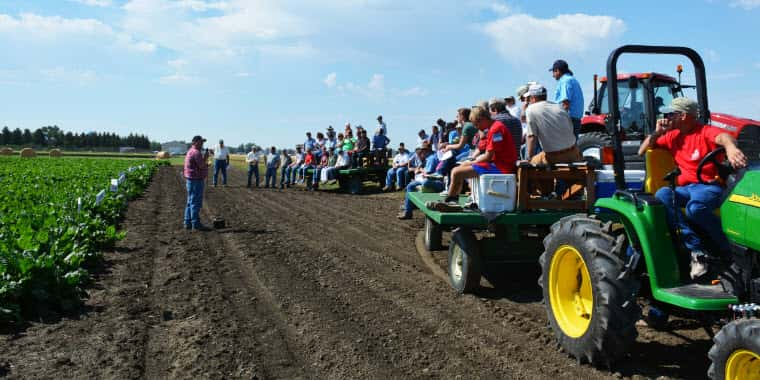by Matt Swayne, Penn State
UNIVERSITY PARK, Pa. — Federal cooperative extension programs have helped more than 137,000 farmers stay in business since 1985, according to economists.
In a study, the researchers said that 137,700 farmers would have left the industry without the federal program, which uses research from the country's land grant universities to provide education and learning opportunities to farmers and other citizens. Without cooperative extension, and the underlying research, the researchers estimated that the country would have lost 28 percent more farmers than actually left agriculture.
“The U.S. needs far fewer farmers now to produce our food than we did 100 years ago, due to land grant university investments in research on new technologies and outreach via Extension,” said Stephan Goetz, professor of agricultural and regional economics in Penn State's College of Agricultural Sciences and director of the National Agricultural and Rural Development Policy Center. “However, U.S. food production is vital to national security and even with new technology, the U.S. may lose production capacity if we keep losing farmers. With fewer farmers, rural areas may lose economic vitality, as well.”
The cooperative extension program, which was started in 1914 through the Smith-Lever Act, also serves as an effective job creation program, according to the researchers, who report their findings in the journal Applied Economic Perspectives and Policy.
“Compared to the costs of other job creation programs, cooperative extension is a remarkably good investment,” Goetz said. “Over our 26-year sample, this federal spending amounted to only $265 per farmer per year, while agricultural research spending added another $140.”
In recent years the average state match of federal extension dollars has increased to nearly $3.5 in state contributions for every $1 nationally, although in Pennsylvania it is $2 for every $1 of federal money invested, according to Goetz. This translates into a state cost of approximately $1,000 per farm for the extension program nationally, and $500 in Pennsylvania, per year. In comparison, the cost of creating a single new job through traditional state industrial recruitment programs is usually in excess of $100,000 per job.
Cooperative extension and agricultural research translate into higher farm profits, allowing farmers to stay in agriculture, added Goetz, who worked with Meri Davlasheridze, assistant professor and economist, Texas A&M University at Galveston.
These programs are cost effective in part because they are leveraged as farmers share these new approaches with each other, according to the researchers. The broader youth, family and community development programs offered by extension also support rural entrepreneurship and innovation, enhancing rural economic vitality.
CLICK HERE to read more
Source: Penn State University
Photo credits: Montana State University Extension Field Days


